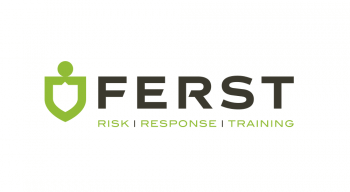This case study will examine the lessons learned about compliance to Australian Standards and the importance of emergency planning and training from the tragic 2016 Dreamworld incident.
An emergency incident occurred at Dreamworld on the Gold Coast on the 25th of October 2016 resulting in the tragic deaths of 4 people, when a raft on the Thunder River Rapids Ride (TRRR) capsized and collided with another raft (Coroners Court of Queensland, 2020).
The six week Coronial Inquest conducted by Coroner James McDougall handed down its findings on the 24th of February 2020 and recommended that Ardent Leisure be referred to the Queensland Office of Industrial Relations as they “may have committed an offence” (pp. 274, Part 1060).
In a formal statement released on the 21st July 2020, Ardent Leisure confirmed that charges had been laid against the Dreamworld parent company by the Queensland Work Health and Safety Prosecutor (Weir, 2020).
On the same day the statement was released, Gold Coast news sources published that the Queensland Office of Industrial Relations had confirmed that 3 charges had been laid against Ardent including.
“failing to ensure as far as reasonably practicable, the provision of information, training, instruction or supervision that was necessary to protect all persons from risks to their health and safety arising from work carried out as part of the conduct of the business or undertaking”
(MyGC.com.au, 2020)
According to QLD WHS legislation, failing to comply with a health and safety duty that exposes a person/s to a risk of serious injury, illness or death is a category 2 offence (Queensland Parliamentary Councel, 2011, pp. 42, Clause 32).
James MacDougall, in is inquest report found that Australian Standards had not been followed by Dreamworld management. Australian Standards are widely considered “best Practice” yet are not legislation, however this case study proves that business owners will still be held accountable for not adhering to standards when it comes to WH&S. The findings of the coronial inquest stated,
“It was agreed by the experts, and became obvious during the inquest hearing, that best practice for the TRRR was not followed by Dreamworld, particularly in relation to compliance with introduced Australian Standards designed to ensure the safety of devices. Whether these requirements are mandatory or not is largely irrelevant. Those Standards are the minimum practice that is required”.
(Coroners Court of Queensland, 2020, pp. 259, part 997)
When it comes to staff training, this case study reveals that where training is inadequate, inappropriate or incorrect, it will be the Person Conducting the Business or Undertaking that will be held accountable, not training supervisors or senior staff.
Whilst the training Ms. Williams undertook on the morning of the tragic incident was clearly insufficient for the extensive tasks and functions she was required to perform, this was not due to any particular failing by Ms. Crisp. Rather, it was evidence of an inherent lack of proper training and process in place at Dreamworld to ensure the training provided to new Ride Operators and Instructors was suitable for the roles and responsibilities to be undertaken.
(Coroners Court of Queensland, 2020, pp. 266, Part 1032)
The lack of emergency response training and testing by means of exercise or drills was also a major finding of the inquest and obvious basis for the impending charges against Ardent. Section 1034 of the findings of the inquest state;
There was no indication as to what constituted an ‘emergency’, nor were staff adequately trained or provided with sufficient authority and situational awareness to use the button when necessary. Furthermore, there were no emergency drills undertaken at the Theme Park, despite recurring recommendations from internal and external audits that this be undertaken. Had this been done, it may have reduced the stressors associated with responding to such traumatic events, and made such a response more effective.
(Inquest into the deaths of Kate Louise GOODCHILD,, 2020, pp. 266, section 1034).
Lessons learned from this tragic incident are that Australian Standards are in place for responsible persons to maintain a minimum practice standard and should be complied with, especially in terms of work, health and safety. The unfortunate predicament for many persons conducting a business or undertaking is that Australian Standards in emergency planning and response are not proactively enforced at a state level. Some industries have internal audit processes or insurance requirements that mandate adherence to standards. The tragic situation for most businesses however, is that they usually only discover that they are non-compliant when an accident involving injury or fatality occurs. Imagine what you would be feeling if an employee was injured or worse on your premises and then you have State Work Health & Safety agencies or Coroners wanting to see your emergency plan and asking some hard questions about training and response procedures!
If you would like an assessment of your Emergency Response Plans and Procedures contact FERST.
Author: FERST
References
Coroners Court of Queensland. (2020). Inquest into the deaths of Kate Louise GOODCHILD,. Southport: Queensland Government.
MyGC.com.au. (2020, July 21). Dreamworld owner charged over 2016 ride tragedy. My Gold Coast . Gold Coast, Qld, Australia: Hot Tomato Broadcasting Company.
Queensland Parliamentary Councel. (2011, July 1). Work Health and Safety Act. Brisbane, Qld, Australia: State of Queensland.
Weir, B. (2020). Prosecution in relation to the 2016 Dreamworld tragedy. North Sydney: The Board of Ardent Leisure Group Limited.

